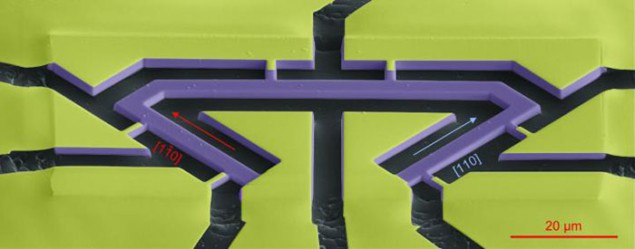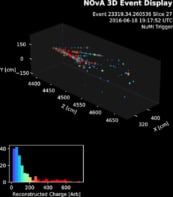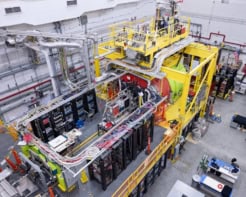
An unusual type of collective motion among electrons has been spotted by physicists in Germany and the US. Called electronic nematicity, the effect is seen when an antiferromagnetic crystal is exposed to high magnetic fields. The researchers say that their work could help disentangle the phenomenon from that of superconductivity and in doing so contribute to the search for new high-temperature superconductors.
Ever since high-temperature superconductivity was discovered in 1986, physicists have been searching for materials with ever higher superconducting transition temperatures. Their quest, however, has been hampered by the absence of a unifying theory to describe the phenomenon. In conventional superconductors, the Bardeen–Cooper–Schrieffer theory tells us that electrons moving through a crystal lattice can undergo a collective motion mediated by lattice vibrations. This causes electrons to link up into pairs and form a superconducting state in which current flows without resistance. But that mechanism cannot explain the behaviour of high-temperature superconductors (HTSs).
One major impediment in the development of a suitable theory, according to Toni Helm of the Max-Planck Institute for Chemical Physics of Solids in Dresden, has been the inability to properly isolate superconductivity from other collective phenomena in HTS materials. One such phenomenon is electronic nematicity, which, like the alignment of molecules in a nematic liquid crystal, involves most electrons in a metallic conductor favouring a certain direction of flow over another one. Since the flow in normal metals usually does not have such preferences, and therefore obeys the symmetries of the surrounding material, electronic nematicity is said to “break” the symmetry of flow.
Symmetry breaking
Helm is part of a collaboration of physicists at the Max-Planck Institute and a number of institutes in the US, under the leadership of Dresden colleague Philip Moll. The team used a microscopic device that was machined from an extremely pure single-crystal sample of layered cerium, rhodium and indium (CeRhIn5) – a superconductor – grown at the Los Alamos National Laboratory in New Mexico. The researchers placed their crystal in the static magnetic field of the DC Field Facility at the National High Magnetic Field Laboratory in Florida and found that it underwent symmetry breaking at magnetic fields around 30 T. They then transferred the sample to the even higher fields available in the lab’s Pulsed Field Facility and observed the nematicity to disappear above about 50 T.
The team is not the first to see electronic nematicity and superconductivity in the same material because the combination has been observed in HTS compounds based on iron and copper. What is new is the ability to create the two states independently of one another. The researchers were able to tune the CeRhIn5 into and out of a superconducting state by applying or releasing pressure, while at the same time tuning the magnetic field to induce nematicity. Doing so, they have begun to construct a magnetic field versus pressure phase diagram for the material.
An important goal, explains Helm, is to establish whether nematicity and superconductivity are co-operative, competitive or independent phenomena. The group has not got to that point yet but has uncovered an intriguing effect. The researchers have found that if they tilt the orientation of the magnetic field then they can control the preferred direction of the electron flow. “The really interesting thing for physicists is that this new state of matter seems to be completely decoupled from the crystal,” he says.
High pressure
The next step is to fill in the phase diagram by varying pressure and magnetic field at the same time. Helm points out that CeRhIn5 only superconducts below 2.2 K and that it needs a very high pressure – more than 10 kbar – to do so, but he says that their work can nevertheless provide a model to better understand materials that superconduct, or potentially superconduct, more readily. “We have the knob to tune both nematicity and superconductivity, and play with these states to see how they interact with one another,” he says. “This makes our work unique.”
The research is published in Nature.



